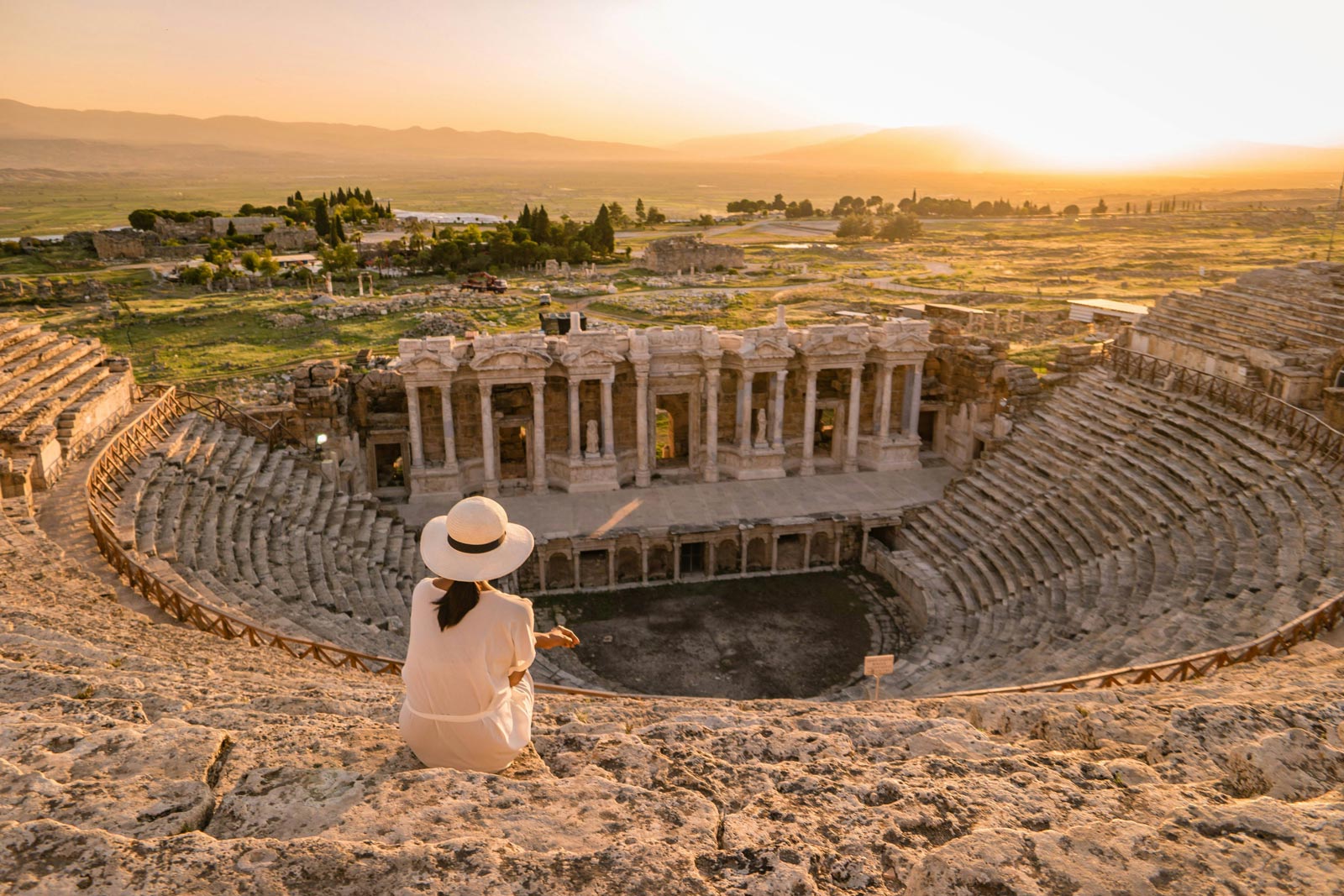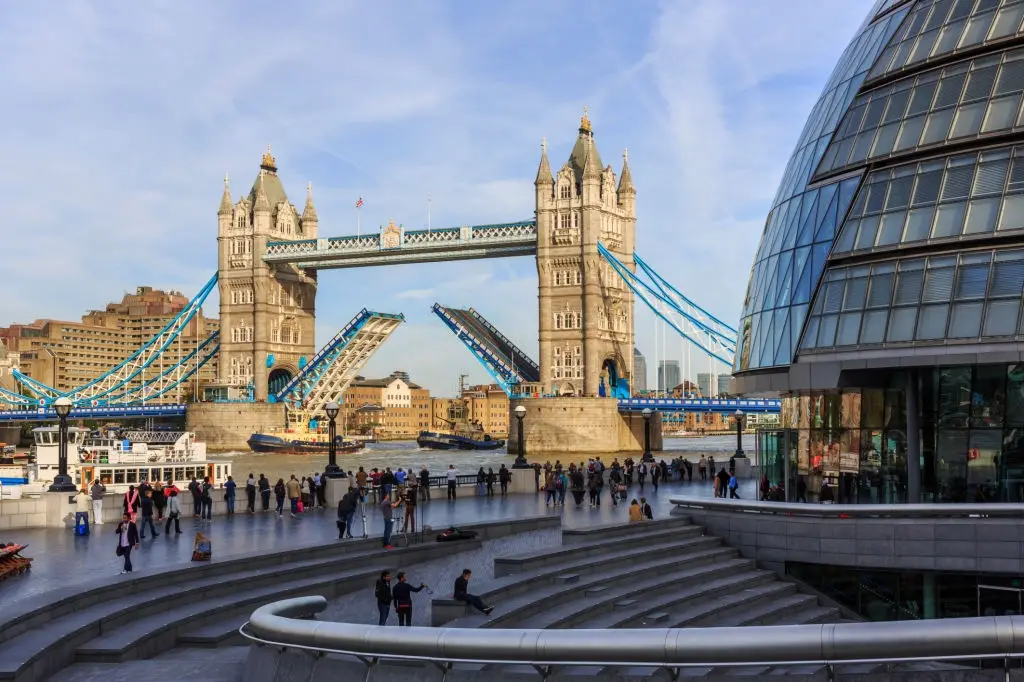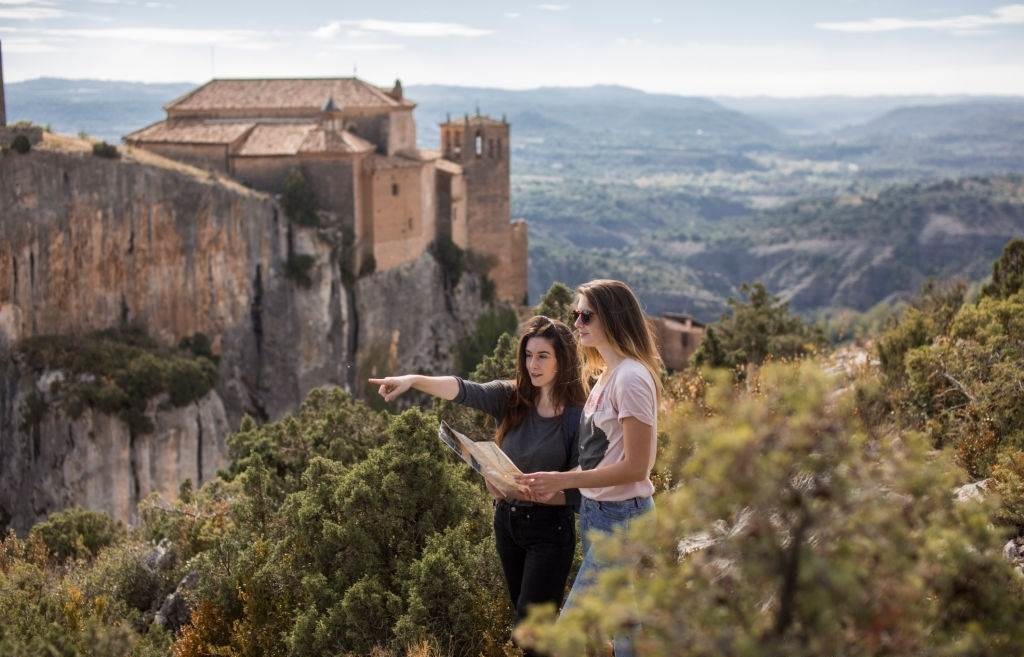Perched above the dazzling white travertine “cotton castle” of Pamukkale in Turkey’s Aegean interior, the ancient Greco‑Roman city of Hierapolis has been soothing weary travellers for more than two millennia. Designated a joint UNESCO World Heritage Site with the terraces below in 1988, it rewards visitors with steaming mineral pools, a spectacular 12,000-seat theatre, one of Asia Minor’s largest necropolises, and a front‑row view of nature’s sculpture garden.
In this comprehensive guide, you will find everything you need to craft an unforgettable and affordable visit: the best time to go, how to get there, what it costs, unmissable highlights, sustainability pointers, and insider travel tips that only frequent guides share with their friends.
Why Hierapolis Should Be on Your Bucket List
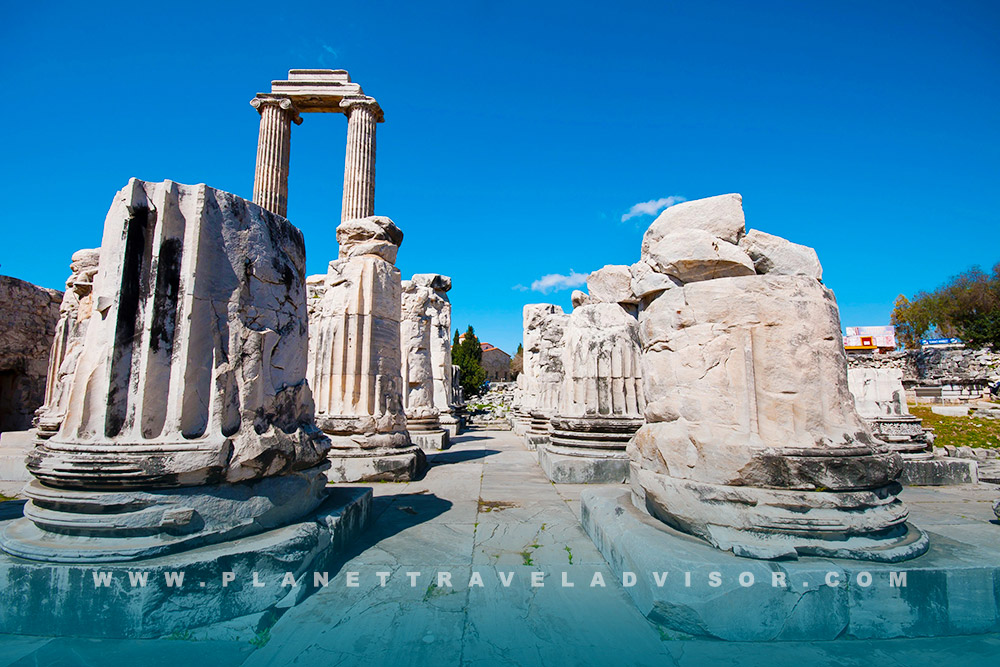
- Dual appeal: You can stroll through a perfectly preserved Roman spa town in the morning and soak in warm travertine pools by afternoon.
- Year‑round bathing: Cleopatra’s Antique Pool stays a balmy 36 °C (97 °F) whatever the season, so winter trips are just as rewarding.
- Accessible price point: Entrance to the archaeological zone and terraces is currently €30 (approximately US$33) for adults, while Turkish citizens with a Müzekart pay just TRY 60.
- Efficient travel links: Direct Istanbul–Denizli flights start around US$35 one‑way and take about 70 minutes, while minibuses from Denizli Otogar reach the park gates in roughly 40 minutes for TRY 50.
- Photogenic history: From the ornate stage wall of the theatre to sarcophagi‑strewn hillsides, photo opportunities abound on every path.
A Storied Past of Hierapolis in Brief
Founded by the Attalid kings of Pergamon in the late 2nd century BC, Hierapolis flourished under Rome thanks to its healing springs and strategic textile workshops. A devastating earthquake in AD 60 levelled the town, but imperial rebuilding turned calamity into a showcase of Roman urbanism.
By the 2nd–3rd centuries AD, the city boasted colonnaded streets, elaborate baths, and the region’s grandest theatre before later evolving into a Byzantine pilgrimage centre linked to the martyrdom of St Philip.
Must‑See Highlights Inside the Archaeological Park
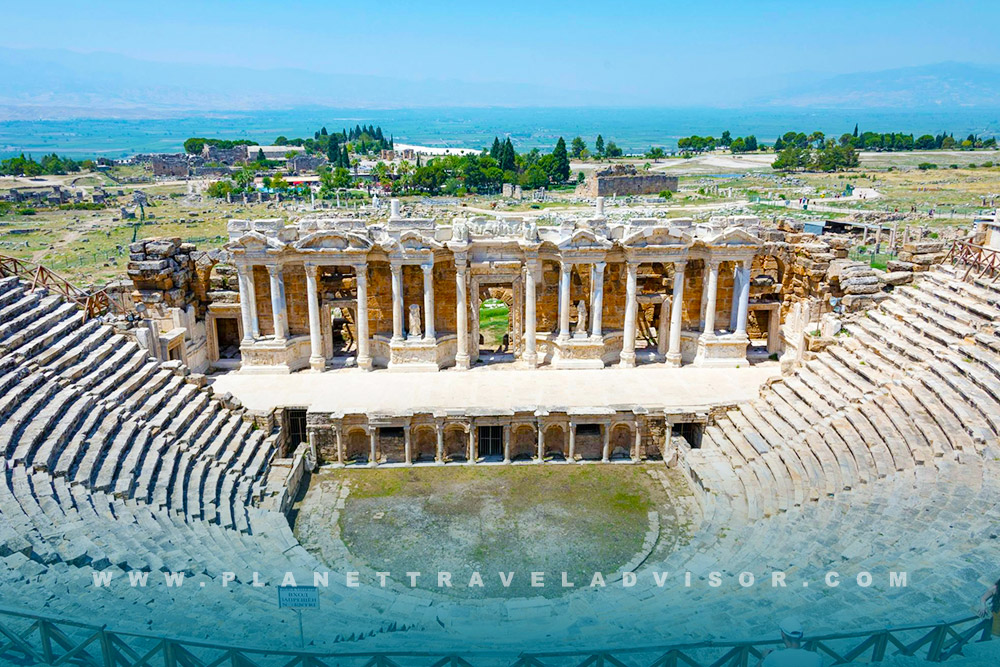
The Grand Theatre
Cut into the hillside, the theatre’s cavea holds fifty rows divided into ten wedges; archaeologists estimate it seated between 10,050 and 12,550 spectators. Climb to the top tier for sweeping views over the travertines and the Lycus Valley.
The Temple of Apollo & the Plutonium
Straddling an active fault, the cavernous Plutonium emitted lethal carbon dioxide, worshipped as the breath of Pluto. Priests reputedly proved their divine favour by entering the cave unharmed, though they probably knew the low‑lying gas pooled near the floor.
Cleopatra’s Antique Pool
A 7th‑century quake toppled Roman columns into this spring‑fed basin; today, bathers float among marble drums in water hovering around 36 °C. Entry (separate from the site ticket) is advertised at TRY 340, about €11, with lockers an additional TRY 60. Arrive before 10 am to enjoy relative calm.
The Archaeology Museum
Housed in the vast Roman baths since 1984, the museum displays exquisite sarcophagi, Bronze‑Age artefacts from nearby Beycesultan, and carved reliefs rescued from the theatre.
Northern & Southern Necropolises
More than 1,200 tombs, ranging from simple Lycian‑style house graves to ornate barrel‑vaulted family monuments, flank the ancient road into the city. Late‑afternoon light turns the honey‑coloured limestone a burnished gold, perfect for photographers.
How to Get to Hierapolis?
By Air: There are up to ninety Istanbul (IST and SAW)–Denizli (DNZ) flights each week, with one‑way fares dipping to roughly US$35 in the December low‑season. The flight takes about 1 hour and 10 minutes.
By Bus: Inter‑city coaches from Izmir, Ankara, Antalya, and other Turkish hubs arrive at Denizli Otogar throughout the day. Fares vary between TRY 200 and TRY 450, depending on route and class, and journeys last three to six hours.
By Train: Five daily regional trains link Izmir Basmane station with Denizli in just under five hours, with tickets available from as little as US$3.24.
Local Transfer: Dolmuş minibuses leave Denizli Otogar for Pamukkale village every fifteen to twenty minutes, cost about TRY 50, and take forty minutes. A taxi from Denizli airport or downtown costs between TRY 500 and TRY 600 and reaches the north gate in twenty minutes. If you’re self‑driving, there is free parking at both the north and south entrances, though the north gate involves less uphill walking.
Opening Hours & Ticketing at Hierapolis Ruins
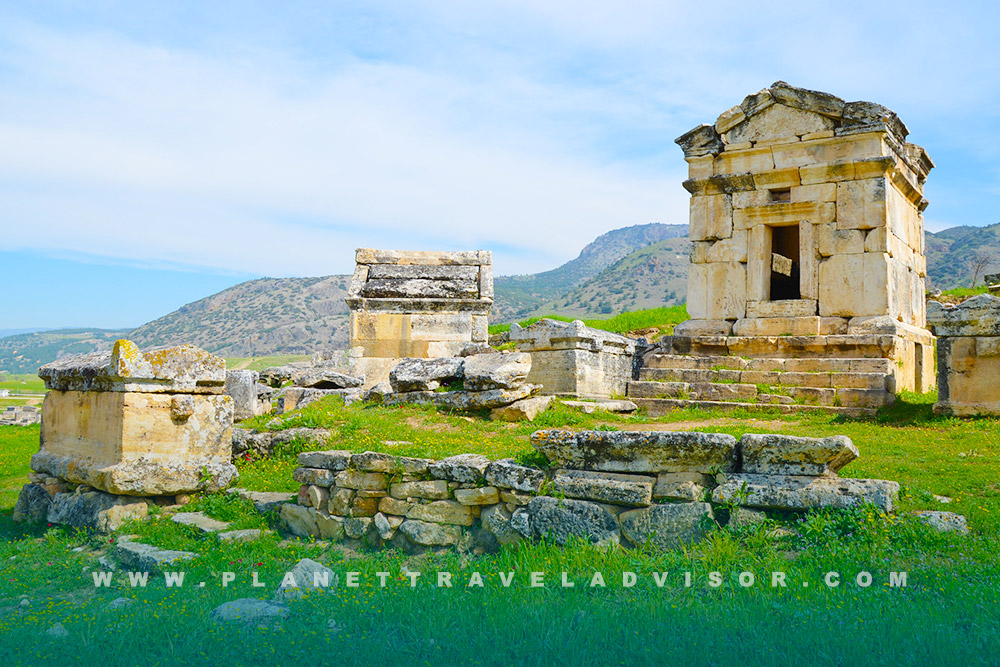
The travertines and the Hierapolis ruins are open daily from 08:00 to 19:00 between April and October, and from 08:00 to 17:00 between November and March. The onsite Archaeology Museum keeps the same hours but closes every Monday, while Cleopatra’s Pool normally operates half an hour longer than the site itself in summer.
Note that a combined ticket for the terraces and the archaeological zone costs €30, whereas bathing in Cleopatra’s Pool is charged separately.
When to Visit Hierapolis: Weather, Crowds & Savings
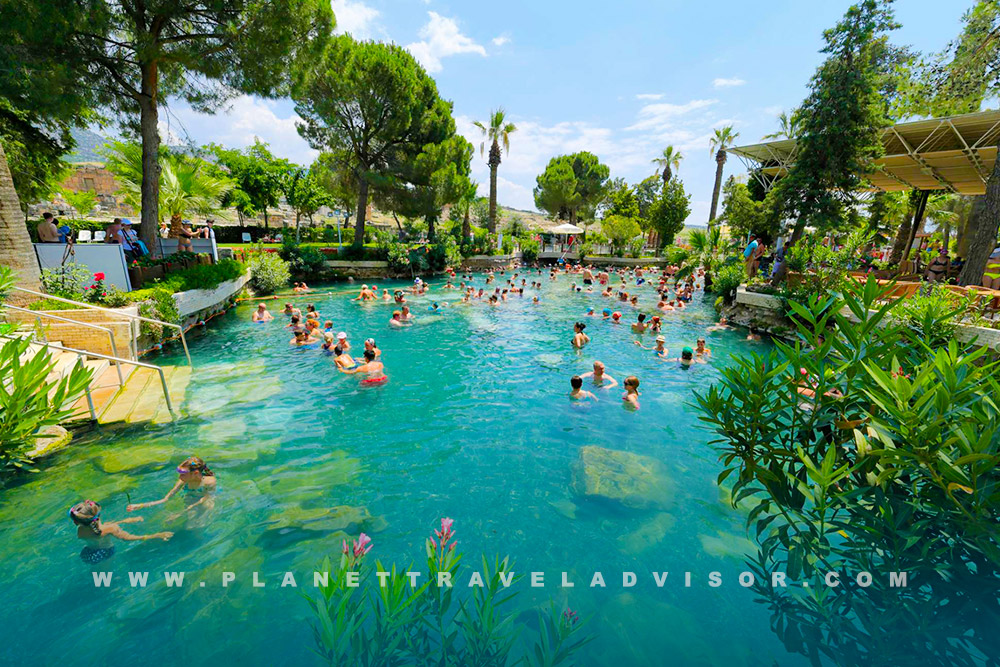
March to May brings mild temperatures, wildflowers, and moderate visitor numbers, ideal for hiking the necropolises without breaking a sweat.
June to August offers long daylight hours and virtually no rainfall, but heat regularly tops 35 °C and crowds reach their annual peak.
September and October still feel summery during the day, yet cool pleasantly at night; crowds thin from late September onward.
November to February is the cheapest time to travel. Average highs hover between 5 °C and 15 °C, but the thermal pools remain gloriously warm and flight–hotel packages plunge to their lowest. Airfare trackers show December as consistently the least expensive month for Istanbul–Denizli tickets, and Pamukkale hotels average just US$66 per night, compared with US$94 on peak‑season weekends.
Hierapolis ranked as Turkey’s third most visited historic site in 2024, welcoming about 2.45 million guests. To dodge tour‑bus crowds, plan to arrive at the gates before 10:00 or after 15:00.
Practical Tips & Etiquette for Hierapolis
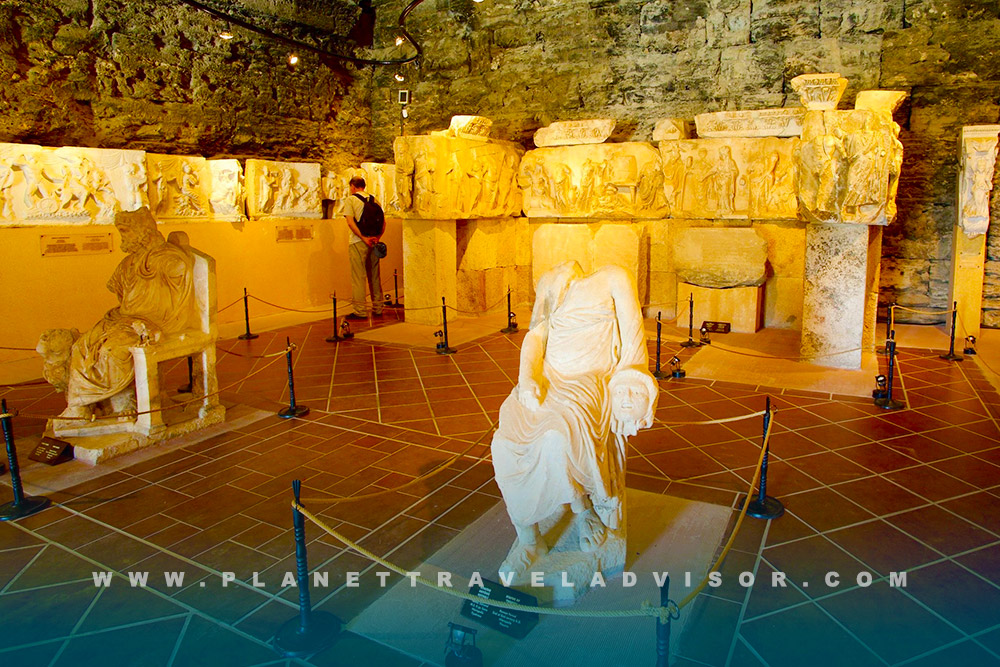
Always remove shoes before stepping on the travertine; carry a small bag to avoid juggling footwear. The slick carbonate surface makes water shoes with a textured sole a wise investment. Drones are prohibited without prior approval from the Denizli governor’s office, and security staff patrol the plateau.
Shade is scarce on the upper terraces, so bring at least 1.5 L of water per person and wear a wide‑brimmed hat. Lockers beside Cleopatra’s Pool cost around TRY 60; have small bills handy. Above all, respect roped‑off regeneration zones; stepping into a dry pool can fracture the delicate crust in seconds.
Evenings outside high summer can be surprisingly cool given the elevation: a light fleece or wind‑breaker is prudent from late September to May.
Final Thoughts
Few destinations blend geology, archaeology, and wellness as seamlessly as Hierapolis. Whether you are a history buff tracing Lycian tomb styles, a photographer chasing travertine reflections, or a budget traveller hunting off‑season bargains, this lofty spa city delivers a timeless Turkish experience. Plan, tread lightly, and let those calcium‑rich waters work their magic; you will leave pampered, enlightened, and keen to return.
Ready to let the warm mineral springs of Hierapolis melt your stress away, float over Cappadocia in a sunrise balloon, and cap each day with a seaside mezze feast in Antalya? Lock in one of our curated Turkey travel packages now, each includes hand‑picked boutique hotels, fast‑track entry to UNESCO treasures, and the insider guides who turn must‑sees into once‑in‑a‑lifetime moments. With limited spring and autumn departures already filling fast, secure your place today and treat yourself to the Turkey adventure you deserve, history‑soaked, hassle‑free, and priced in your favour when you book this week.

